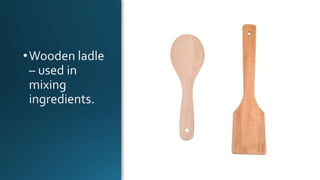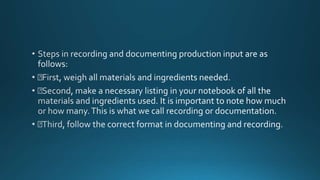The document discusses selecting appropriate tools, equipment, utensils, and instruments for food processing according to the method. It explains the procedure for reporting any defects found in tools, equipment, utensils, or instruments. The goals are to select the proper items for food processing and ensure any defects are addressed.































































































































































































































































































































































































